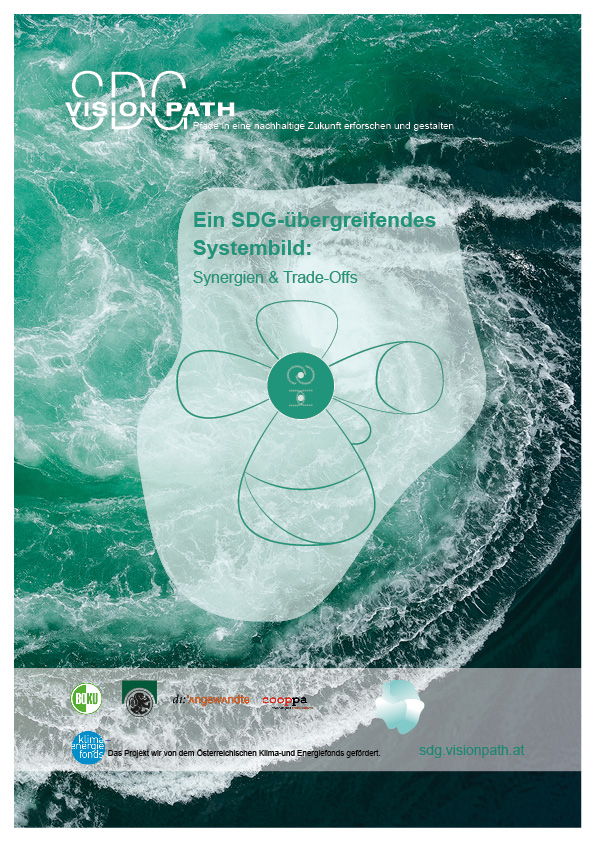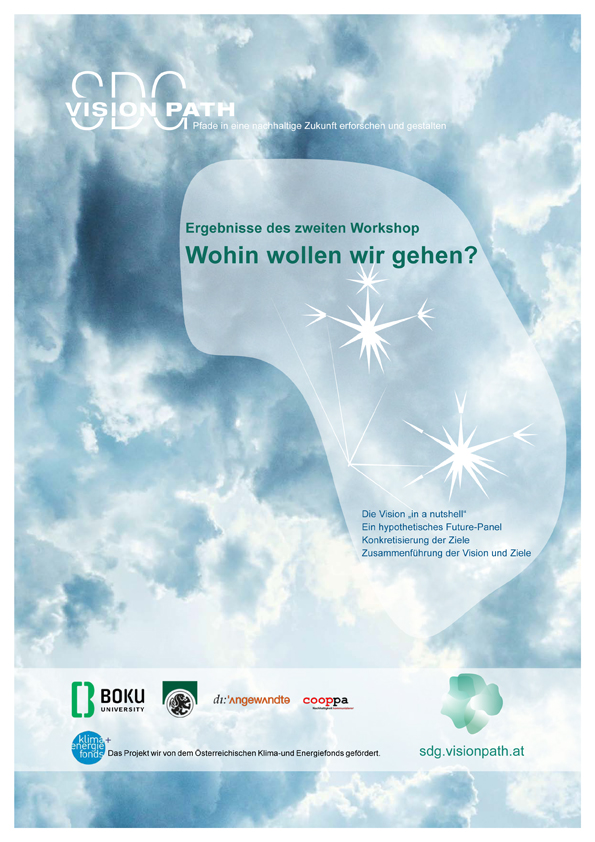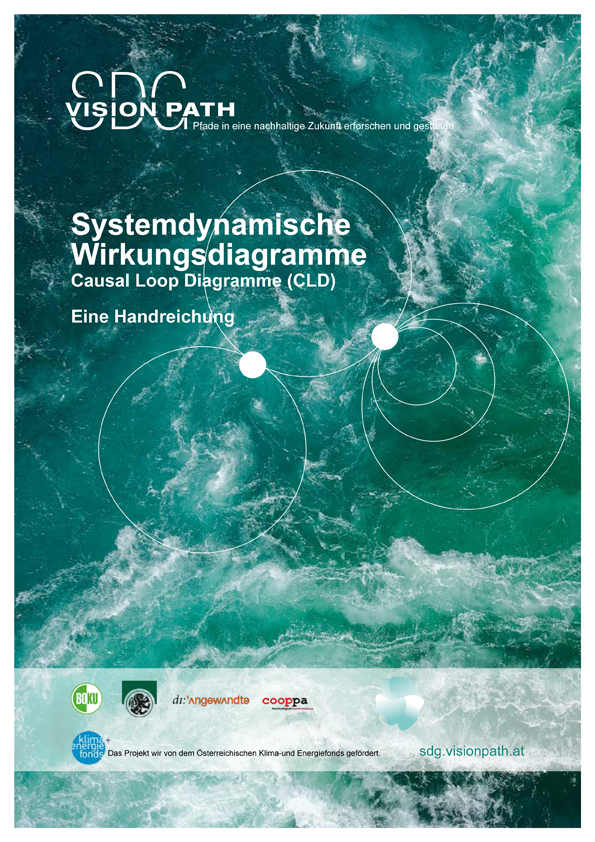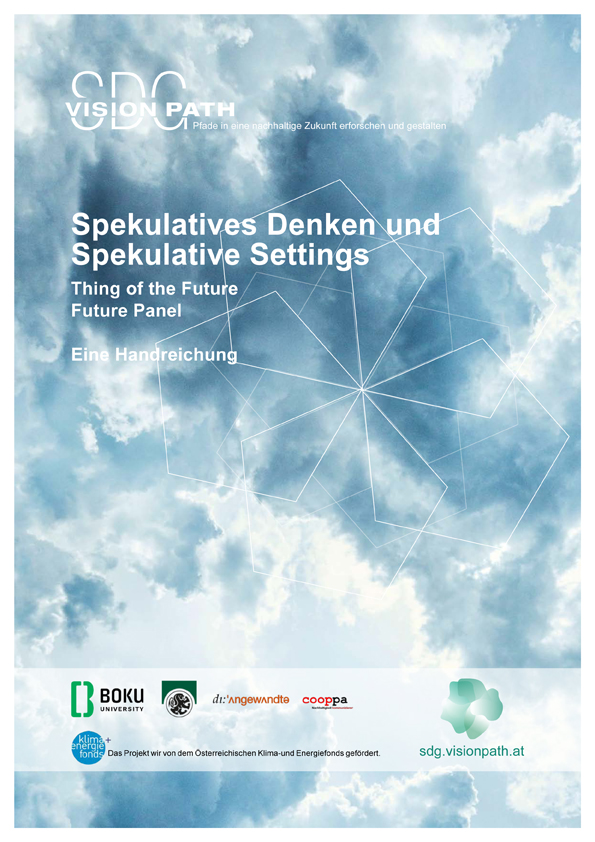A variety of methods are used in this project, which are made available in prepared form. The handouts for the respective method offer compact instructions for applying the method used independently or provide an in-depth background. Furthermore, the two models – iSDG and IPAM – are also presented in detail.
The workshop results

A cross-SDG systems picture
Synergis & Trade-Offs
The final result of the first workshop “What is the problem?”: the five individual CLDs merged into a single, comprehensive system picture. The essential links are presented and discussed in this document.

Workshop 2 – Where do we want to go?
Workshop results
The visions and goals found in a participatory manner are described in this document.

Workshop 3 – How do we get there?
Workshop-Ergebnisse
In this results paper you will find a detailed description of the process – the arc spans from inverted problems to positive potentials to path creation.
The manuals

Systemic Causal Loop Diagrams – CLDs
A Manual
This manual describes the individual steps you can use to create impact diagrams yourself.

Speculative Thinking and spekulative Settings
(Thing of the Future and Future Panel)
A Manual
This manual describes speculative thinking, the detailed presentation of the two formats “Thing of the Future” and “Futures Panel”, as well as the collage technique.
The models

The basis for the model is the Millenium Institute‘s Integrated Sustainable Development Goals (iSDG). Briefly described, it is a simulation tool to understand the complex relationships between the SDGs.
As part of this project, the variables developed in a participatory manner (based on the various workshops) are compared with the existing model and incorporated into the model. The effects of this re-modeling will be discussed in Workshop 4 – What do we recommend? with the question of “What do the models say?” formulated in the form of transformative suggestions from the participatory research process.
The existing structure of the iSDG is based on the 17 goals and their sub-goals. A detailed explanation including instructions for using the Stella simulation software can be found here.

The handout explains in detail the Integrated Poverty Assessment Model for qualitative research.
